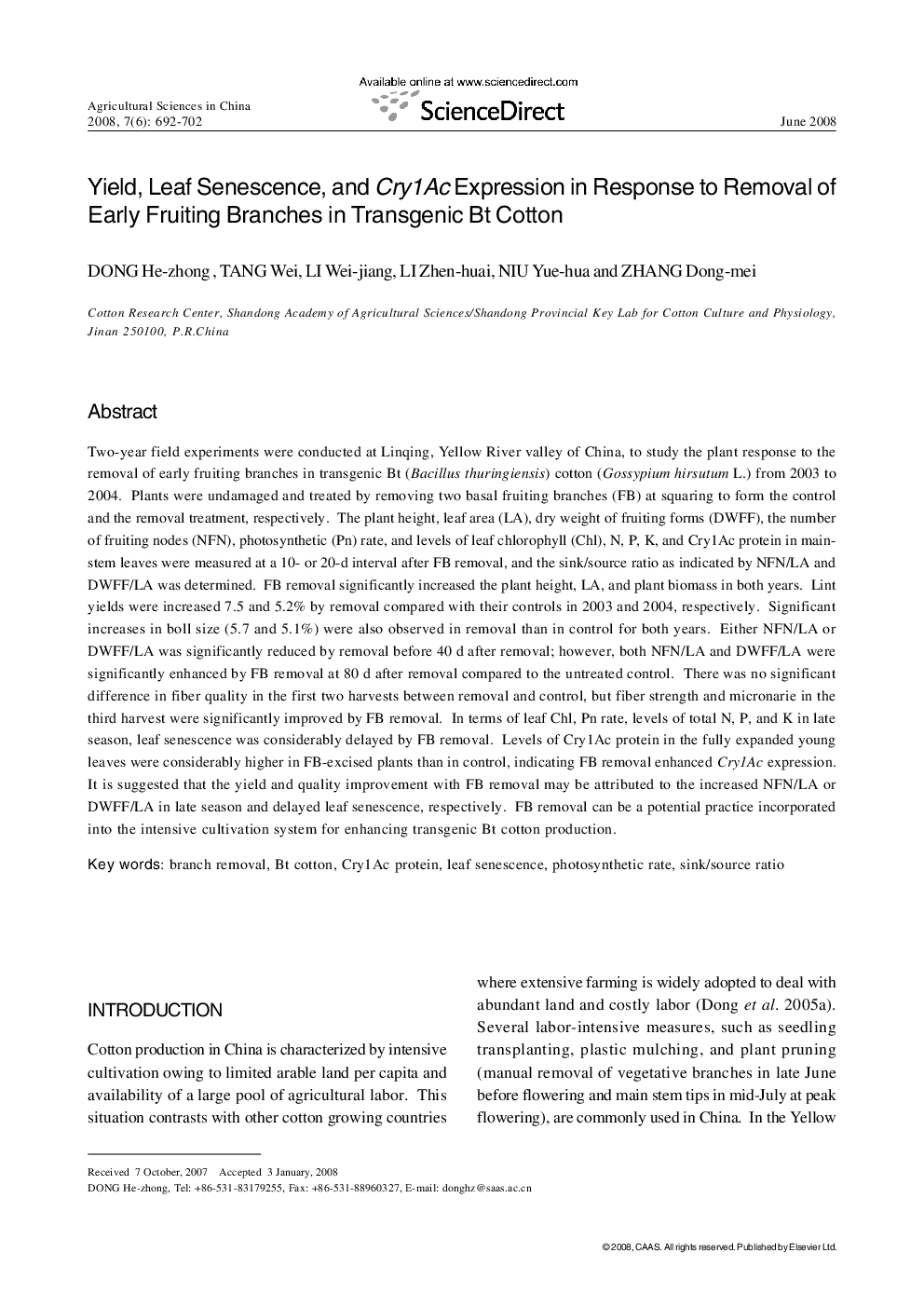| Article ID | Journal | Published Year | Pages | File Type |
|---|---|---|---|---|
| 4490585 | Agricultural Sciences in China | 2008 | 11 Pages |
Two-year field experiments were conducted at Linqing, Yellow River valley of China, to study the plant response to the removal of early fruiting branches in transgenic Bt (Bacillus thuringiensis) cotton (Gossypium hirsutum L.) from 2003 to 2004. Plants were undamaged and treated by removing two basal fruiting branches (FB) at squaring to form the control and the removal treatment, respectively. The plant height, leaf area (LA), dry weight of fruiting forms (DWFF), the number of fruiting nodes (NFN), photosynthetic (Pn) rate, and levels of leaf chlorophyll (Chl), N, P, K, and Cry1Ac protein in main-stem leaves were measured at a 10- or 20-d interval after FB removal, and the sink/source ratio as indicated by NFN/LA and DWFF/LA was determined. FB removal significantly increased the plant height, LA, and plant biomass in both years. Lint yields were increased 7.5 and 5.2% by removal compared with their controls in 2003 and 2004, respectively. Significant increases in boll size (5.7 and 5.1%) were also observed in removal than in control for both years. Either NFN/LA or DWFF/LA was significantly reduced by removal before 40 d after removal; however, both NFN/LA and DWFF/LA were significantly enhanced by FB removal at 80 d after removal compared to the untreated control. There was no significant difference in fiber quality in the first two harvests between removal and control, but fiber strength and micronarie in the third harvest were significantly improved by FB removal. In terms of leaf Chl, Pn rate, levels of total N, P, and K in late season, leaf senescence was considerably delayed by FB removal. Levels of Cry1Ac protein in the fully expanded young leaves were considerably higher in FB-excised plants than in control, indicating FB removal enhanced Cry1Ac expression. It is suggested that the yield and quality improvement with FB removal may be attributed to the increased NFN/LA or DWFF/LA in late season and delayed leaf senescence, respectively. FB removal can be a potential practice incorporated into the intensive cultivation system for enhancing transgenic Bt cotton production.
